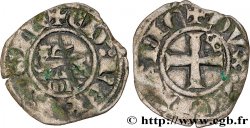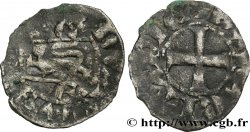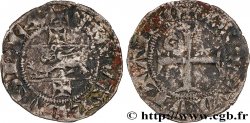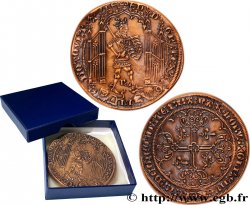Live auction - bfe_1035743 - AQUITAINE - DUCHY OF AQUITAINE - EDWARD III OF ENGLAND Gros tournois à la couronne
You must signin and be an approved bidder to bid, LOGIN TO BID. Accounts are subject to approval and the approval process takes place within 48 hours. Do not wait until the day a sale closes to register. Clicking on "BID" constitutes acceptance of the terms of use of cgb.fr private live auctions.
Bids must be placed in whole Euro amounts only. The sale will start closing at the time stated on the item description; any bids received at the site after the closing time will not be executed. Transmission times may vary and bids could be rejected if you wait until the last second. For further information check the Live auction FAQ
All winning bids are subject to a 18% buyer’s fee.
All winning bids are subject to a 18% buyer’s fee.
Type : Gros tournois à la couronne
Date: c. 1351
Date: s.m.
Mint name / Town : Bordeaux
Metal : billon
Diameter : 25,5 mm
Orientation dies : 8 h.
Weight : 2,88 g.
Rarity : R3
Coments on the condition:
Ce gros est frappé sur un flan large et irrégulier. Monnaie présentant des faiblesses de frappe importante, mais avec des reliefs assez nets pour certaines parties. Patine grise
Catalogue references :
Obverse
Obverse legend : + ED REX - ANGLIE ; LÉGENDE EXTÉRIEURE : + BNDICT[V: SIT: NOME: DNI: N]RI: D, (PONCTUATION PAR DEUX ANNELETS SUPERPOSÉS).
Obverse description : Croix coupant la légende en bas.
Obverse translation : (Édouard, roi d’Angleterre ; que le nom de notre seigneur Jésus-Christ soit béni).
Reverse
Reverse legend : DVX° AQITANIE, (PONCTUATION PAR DEUX ANNELETS) ; EN EXTÉRIEUR DES TRÈFLES DANS DES OVES.
Reverse description : Couronne ; au-dessus un annelet.
Reverse translation : (duc d’Aquitaine).
Commentary
Variété avec un annelet au-dessus de la couronne du revers (Eliard, n° 60e, p. 97). Elias date ces gros tournois à la couronne de 1351 alors que d’autres auteurs ont proposé des datations plus tardives. La présence d’un exemplaire dans le dépôt monétaire de Xaintray (Deux-Sèvres, actuellement à l’étude par A. Clairand) enfoui en 1352 en contenant un exemplaire, donne raison à Elias. Ce type monétaire s’inspire du gros à la queue ordonné à la fin du règne de Philippe VI, avec sa croix coupant la légende en bas. Le châtel tournois a été remplacé par une couronne.
Variety with a ringlet above the crown on the reverse (Eliard, no. 60e, p. 97). Elias dates these gros tournois with the crown to 1351, while other authors have proposed later dates. The presence of a example in the monetary deposit of Xaintray (Deux-Sèvres, currently under study by A. Clairand) buried in 1352 containing a example, supports Elias's argument. This monetary type is inspired by the gros à la queue ordered at the end of the reign of Philip VI, with its cross cutting the legend at the bottom. The château tournois has been replaced by a crown
Variety with a ringlet above the crown on the reverse (Eliard, no. 60e, p. 97). Elias dates these gros tournois with the crown to 1351, while other authors have proposed later dates. The presence of a example in the monetary deposit of Xaintray (Deux-Sèvres, currently under study by A. Clairand) buried in 1352 containing a example, supports Elias's argument. This monetary type is inspired by the gros à la queue ordered at the end of the reign of Philip VI, with its cross cutting the legend at the bottom. The château tournois has been replaced by a crown








 Live starting :
Live starting :  Report a mistake
Report a mistake Print the page
Print the page Share my selection
Share my selection Ask a question
Ask a question Consign / sell
Consign / sell
 Full data
Full data










